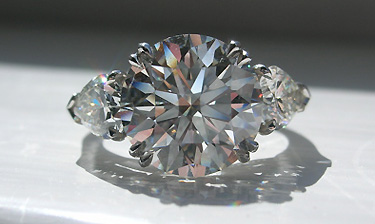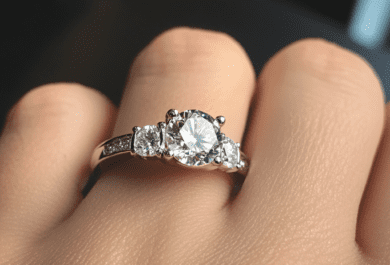|
The HCA estimates a round diamond’s appeal based on light return, fire, scintillation and spread.
Brilliance is an essential attribute of a beautiful diamond and has 2 components; brightness and contrast.
40 years ago grading reports were only done for the finest quality diamonds. But today even very low quality larger diamonds sold in Wal-Mart come with a cert.
Glare is light reflected off the diamonds surface.
A fish-eye is a nasty appearance that you can see just inside the table of a diamond.
Some older members of the diamond industry share a strange fallacy that if a diamond has proportions of 60% depth and 60% table, then it will be beautiful. It’s a great idea, but it does not always work
Spread is very important to you, but hardly ever talked about by technicians working away in labs. |
|
In 1919 a young mathematician, Marcel Tolkowsky, wrote a Masters thesis on the proportions for round brilliant cut diamonds. This became the basis for what is now known as the “Ideal Cut”.
What is an AGS Ideal Diamond?
Firescope is based on Mr. Okuda from Japan’s 1970’s invention.
The Sarin digital scanner measures diamond proportions 10 times faster and more accurately than previous method.
Imitations diamonds and faked improvements to natural stones date back thousands of years.
Jewels and gems last a long time, so good sales people will make claims like this is an “investments” and “will always be worth more than what they cost”.
Diamond quality refers to a combination of factors known as the 4Cs. Diamonds are graded by diamond laboratories, and then ultimately rated and priced accordingly. |












